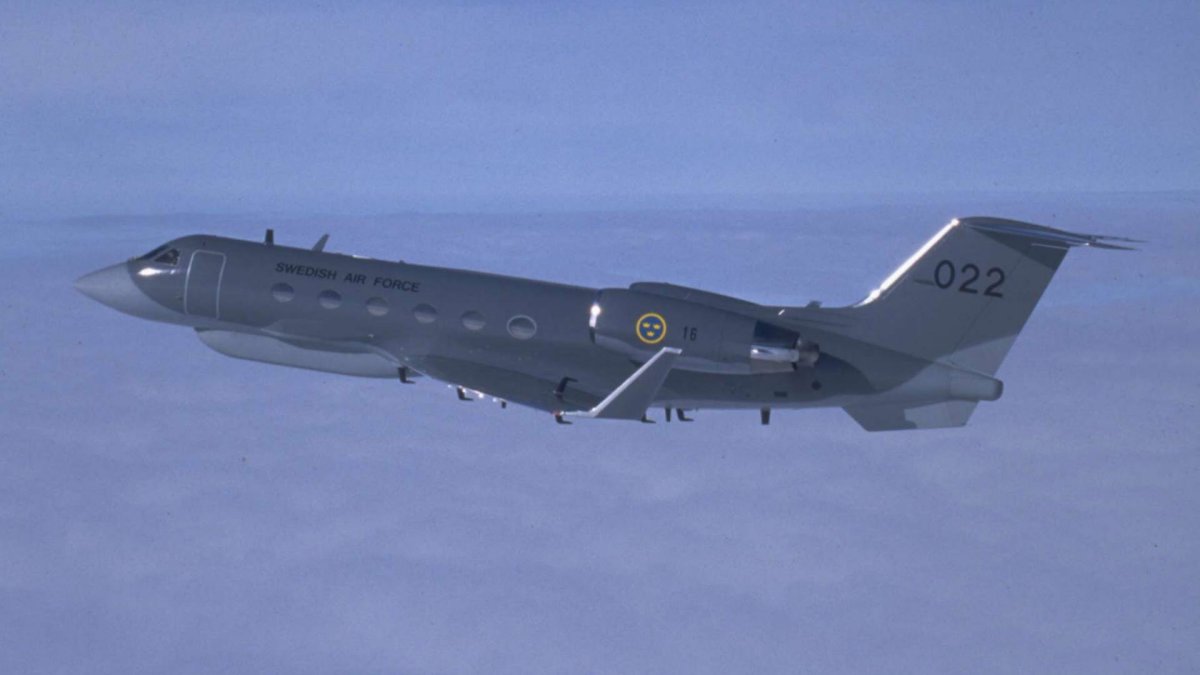The airspace near NATO's eastern flank was crowded with multinational surveillance assets Tuesday as the alliance ramped up its monitoring of Russia's border areas.
The United States, Britain, France and Sweden were among four individual members to deploy intelligence, surveillance and reconnaissance (ISR) aircraft to the Baltic Sea, while a NATO unit launched an airborne early warning and control plane on the same day, according to Newsweek's review of data captured by the website Flightradar24.
Why It Matters
The intensive ISR activity comes amid ongoing concerns over Russian grey-zone activity, including suspected subsea cable sabotage targeting the Baltic states of Estonia, Latvia and Lithuania. Regional governments are also closely watching the unusual movements Russia's so-called "shadow fleet" of sanctions-busting oil tankers.
NATO spy flights near Russia's western borders aren't new, however. Open-source flight-tracking data showed that alliance members flew dozens of sorties last year to gather signals intelligence on the Kremlin's forces—not only communications, but also emissions from Russian radars and weapons systems.
Russia's own intelligence-gathering planes and fighter jets are frequently intercepted in Baltic skies. Last August, a U.S. Air Force drone reported communications issues resulting from likely signal jamming.
NATO did not immediately respond to a query about concerns over Russian electronic warfare. Russia's Foreign Ministry could not be reached for comment about the NATO air activity.
What To Know
On January 14, the same day NATO launched "Baltic Sentry" and committed more military assets to safeguard power cables and data links in the Baltic Sea, at least six crewed aircraft were in the air for ISR missions, flight data showed.
A U.S. Air Force RC-135V Rivet Joint operating out of the British air force base near Mildenhall in the east of England flew an 11-hour sortie that swept the borders of Belarus and Russia up to the Kola Peninsula in the Arctic Circle. It was one of four flights this month by the electronic intelligence aircraft to watch the Russian military, the deployments suggest.
Some 70 miles to the northwest, Britain launched one of its RC-135W Rivet Joint planes from RAF Waddington—one of three flights this month, in addition to two other sorties by another RAF Rivet Joint this week. Newsweek's map shows the nine-hour flight utilizing friendly airspace to circle Kaliningrad, Russia's semi-exclave sandwiched between Poland and Lithuania.
Also watching Russia's naval stronghold on the Baltic Sea was a British Poseidon MRA1, an aircraft built for anti-submarine warfare, known to U.S. Navy operators as the P-8A. It was dispatched from RAF Lossiemouth in northeast Scotland, on the same day a French air force King Air 350ER surveillance plane, operating out of Lithuania's Siauliai Air Base, flew a circle around Kaliningrad, too.
Flight records showed a Swedish air force S102B Korpen—designed for "technical signals reconnaissance" on radar, navigation equipment and weapons systems—scanning part of Finland's 830-mile land border with Russia. The aircraft was temporarily operating from Finland's joint-use Tampere-Pirkkala Airport, having first borrowed Finnish airspace for an ISR mission in August 2023, just four months after Helsinki's accession to the North Atlantic Alliance.
Sweden's Korpen, or "raven," has flown five flights near the Russian and Belarusian borders since January 10, including one ongoing at the time of publication on Thursday.
The sixth crewed aircraft broadcasting Tuesday was an E-3A Sentry assigned to the NATO Airborne Early Warning and Control Force operating out of NATO Air Base Geilenkirchen in western Germany. The tracks of its 10-hour flight showed the plane patrolling the airspace above Poland and later Estonia.
Analysis published this week in Northern Connections, the Nordic-focused online magazine under the Center for Strategic and International Studies think tank in Washington, D.C, researchers urged NATO to leverage Finland and Sweden's accession to bolster air power in the High North.
"Forces can be deployed, dispersed, and sustained across borders, and assets can increasingly be pooled among allies, potentially yielding significant gains in combat power and contributing to a more versatile and less vulnerable fighting force," wrote Eskil Jakobsen and Øystein Solvang, both affiliated with the Norwegian Institute of International Affairs.

What People Are Saying
Writing in Northern Connections, Rebekka Åsnes Sagild, a senior researcher at the Norwegian Defense University College, said of submarine cable sabotage in the Baltic Sea: "These incidents suggest a potential emerging strategy of infrastructure disruption. Moreover, the pattern raises critical questions about maritime security, infrastructural vulnerability, and the complex geopolitical tensions among China, Russia, and European nations.
"This strain amplifies the likelihood of low-threshold conflicts, a dynamic that manifests in the Arctic through sabotage targeting critical infrastructure, with Russia often being the primary suspect, potentially leveraging Chinese vessels as proxies."
U.S. Army General Christopher Cavoli, Supreme Allied Commander Europe, said of NATO's new initiative to protect critical infrastructure in the Baltic region: "Baltic Sentry will deliver focused deterrence throughout the Baltic Sea and counter destabilizing acts like those observed last month. It is indicative of the Alliance's ability to rapidly respond to such destabilization, and shows the strength of our unity in the face of any challenge."
What Happens Next
More than once since the Russia-Ukraine war began, Moscow has accused NATO's members of surrounding its borders with surveillance activity. Now, according to Finnish broadcaster Yle, the alliance is looking for a new ISR site in Finland, directly on Russia's doorstep.
In a move that would alarm the Kremlin, reports suggest Tampere airport, currently used by the Finnish air force, could host American reconnaissance drones, allowing for the possible deployment of ISR assets deeper into the Arctic, a region the Russian navy uses to conceal its ballistic missile submarines.




















 English (US) ·
English (US) ·